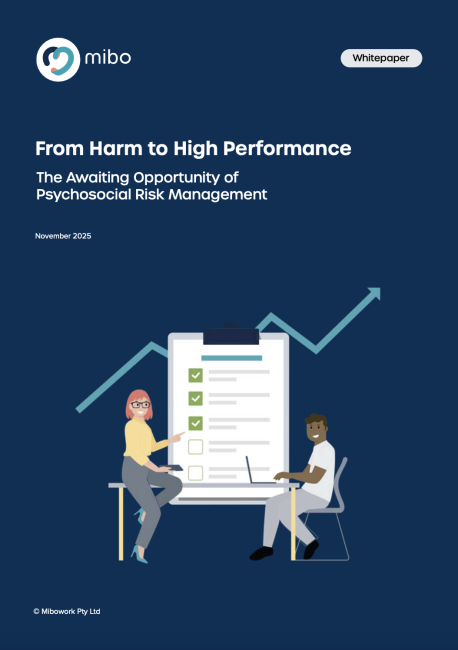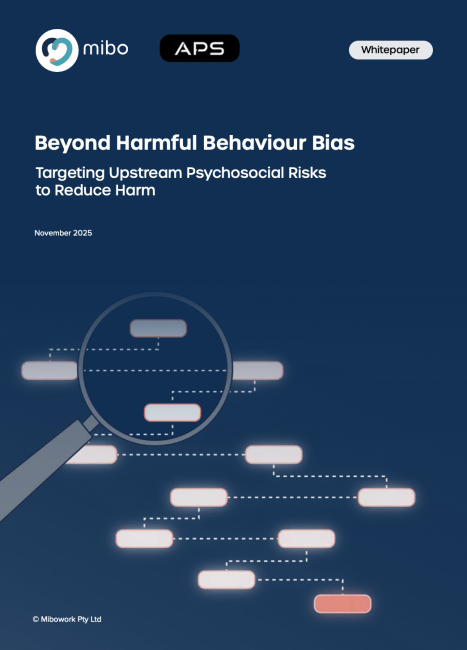Mibo Next-Gen Psychosocial Risk Management Quick Guide
Want a quick guide that all the Mibo technology platform offers to support your psychosocial risk management efforts?
Here it is:
Want a quick guide that all the Mibo technology platform offers to support your psychosocial risk management efforts?
Here it is:

Reports and Guides
19/11/25
The psychosocial environment is a critical strategic priority for organisational success. When managed effectively, it drives underlying dynamics and provides accessible levers for improving employee health and work outcomes. Some organisations are already reaping the benefits of recognising this reality and using psychosocial risk management as a vehicle for high performance. While others who resist […]
LEARN MORE
Reports and Guides
13/11/25
The Safe Work Australia Key Work Health and Safety Statistics 2025 were released in October Among the most alarming stats are that harassment and bullying are again the leading mechanism of serious mental health claims at 33.2%. But does this tell the real story? In this Whitepaper David Burroughs and Sean Fyfe reveal crucial statistics […]
LEARN MORE
Reports and Guides
29/10/25
In this paper, we join with leader in the field Tony Morris to outline the psychology of fear commonly experienced by executives in psychosocial risk management, along with its typical outcomes and costs. We also provide practical guidance for leaders to proactively engage in a rigorous psychosocial risk management process, not only to meet regulatory […]
LEARN MORE